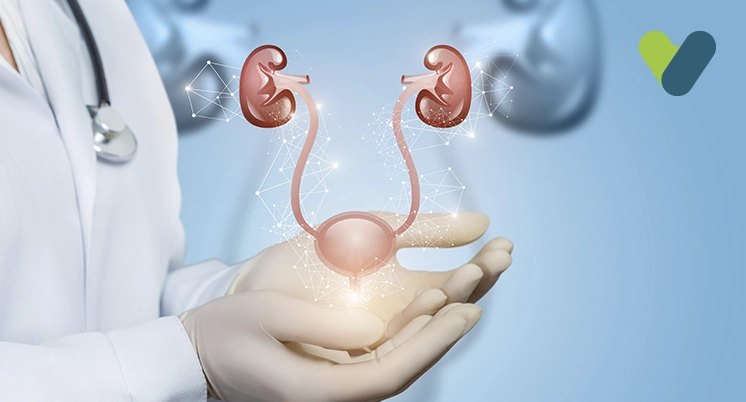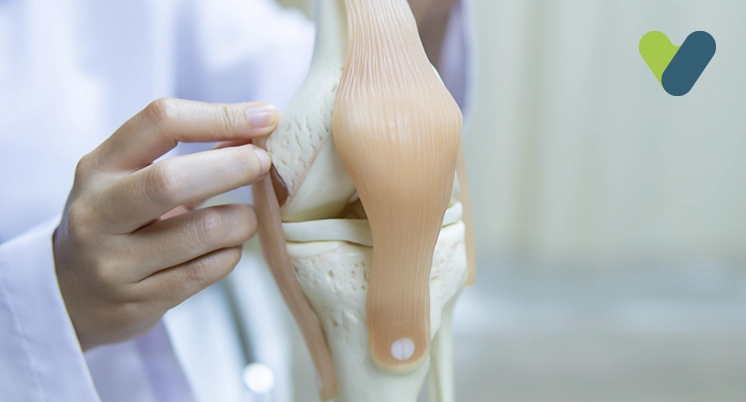A cystoscopy is a routine procedure used to diagnose any problems with the urethra, bladder, or ureters. After diagnosing the condition, your urologist might also perform a cystoscopy operation to treat the underlying cause of your symptoms.
The urologist can diagnose and treat conditions like bladder control issues, bladder or urethral cancer, enlarged prostates, etc. Keep reading to learn more about this procedure. Also Read: Overactive Bladder Syndrome: Symptoms, Causes & Treatment
What is Cystoscopy?
Also known as cystourethroscopy or cystopanendoscopy, it is a procedure to look inside the bladder and urethra using an endoscope*. The procedure of probing inside the bladder usually takes 5 to 20 minutes in total except for the preparation and examination after the procedure. A cystoscopy is an outpatient procedure, which makes it convenient for people to add it in their schedule. *An endoscope is a thin tube made of metal/silicone/rubber with a camera and light source attached to its tip.Type of cystoscopies
There are two types of cystoscopies, which use different kinds of cystoscopes. Flexible cystoscopy:This procedure is performed with the help of a thin and flexible cystoscope made of rubber/silicone for diagnostic purposes. There are less chances of injury or discomfort during the procedure when this cystoscope is used. Rigid cystoscopy:
This procedure is performed using a metal cystoscope which is straight and does not bend. Both operative and diagnostic cystoscopies can be performed using this cystoscope. The endoscope used in this process has a glass tube which projects clearer images.
Candidates for a Cystoscopy
People who notice the following symptoms are likely candidates of a cystoscopy if medicines don’t work:- ning sensation or pain during urination
- Frequent urinary tract infections (UTIs)
- Inability to empty the bladder
- Chronic pelvic pain
- Enlarged prostates
- Urinary fistulas or urethral strictures
Treatments using Cystoscopy
A cystoscopy is used to probe and look inside the bladder and urethra to find out the cause of multiple problems. Your doctor may perform a rigid/flexible cystoscopy to:- Place or remove a ureteral stent (a hollow tube to keep the ureter open)
- Remove stones from the bladder
- Perform a biopsy
- Remove outgrowths or cysts
- Treat fistulas or strictures in the urethra
- Diagnose your condition
- Get urine samples from the ureters*
You will be asked to empty your bladder and placed on a table on your back; your feet may be placed in a stirrup with your knees bent. The doctor will then start the procedure by inserting anaesthesia in jelly through the urethra to numb the area; alternatively, you may also be given a sedative intravenously. After some time, the doctor will insert the cystoscope into your urethra and work their way to the bladder. They will then fill up your bladder with clear, sterile liquid to see the insides of your bladder. During this part, the doctor will keep an eye out for any abnormalities—growths, polyps, cysts, cuts, and tumours—in your urethra or bladder. The doctor may also take a tissue sample to conduct a biopsy or perform a small surgery to remove any outgrowths or cysts. In a diagnostic cystoscopy, your doctor will not perform any surgery but may take a tissue sample. If the doctor has an inkling about any tumour or outgrowth in your urethra or bladder, they will perform an operative cystoscopy. Sometimes the patient will be asked to come in later for an additional cystoscopy to perform the operation after the first one.
What to expect after a cystoscopy surgery?
Cystoscopy can be uncomfortable, but you should not feel any pain during the procedure. Slight discomfort or a burning sensation may linger after cystoscopy when you urinate, and that is normal. You may also notice some blood or slightly pink urine; don’t be alarmed. As this is an outpatient procedure, you can walk out of the hospital on the very same day after consulting with your operative doctor. The doctor will ask you to drink plenty of fluids and urinate 2-3 times right after the procedure before releasing you. You should not feel any discomfort, pain, or burning for more than a day or two; consult the doctor if the discomfort persists.Potential risks A cystoscopy operation is usually a safe procedure, but some people may get a UTI or sustain damage to the bladder or urethra due to the cystoscope (rare). You should consult your doctor immediately if you notice any of the following:
• Blood clots in urine or blood red urine • Inability to urinate after going home • Abdominal pain and nausea • High fever and/or chills


